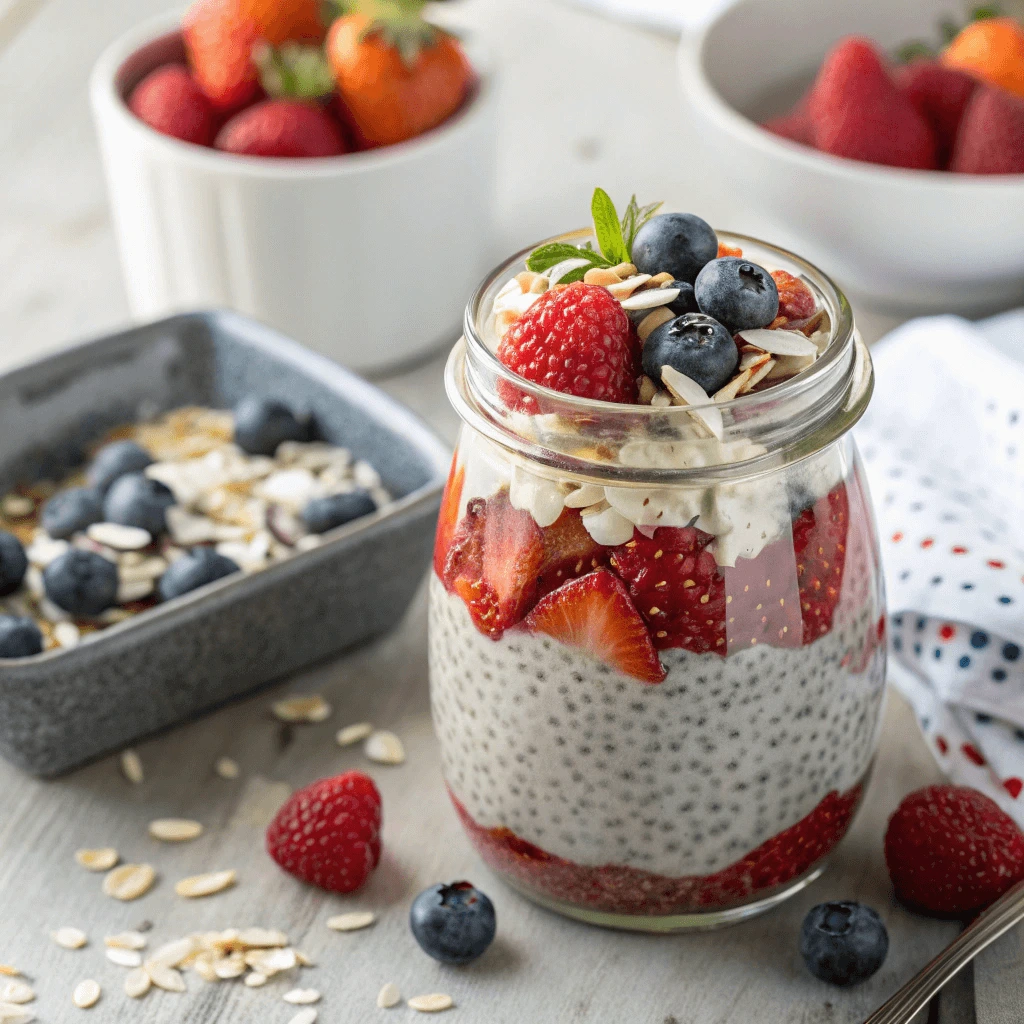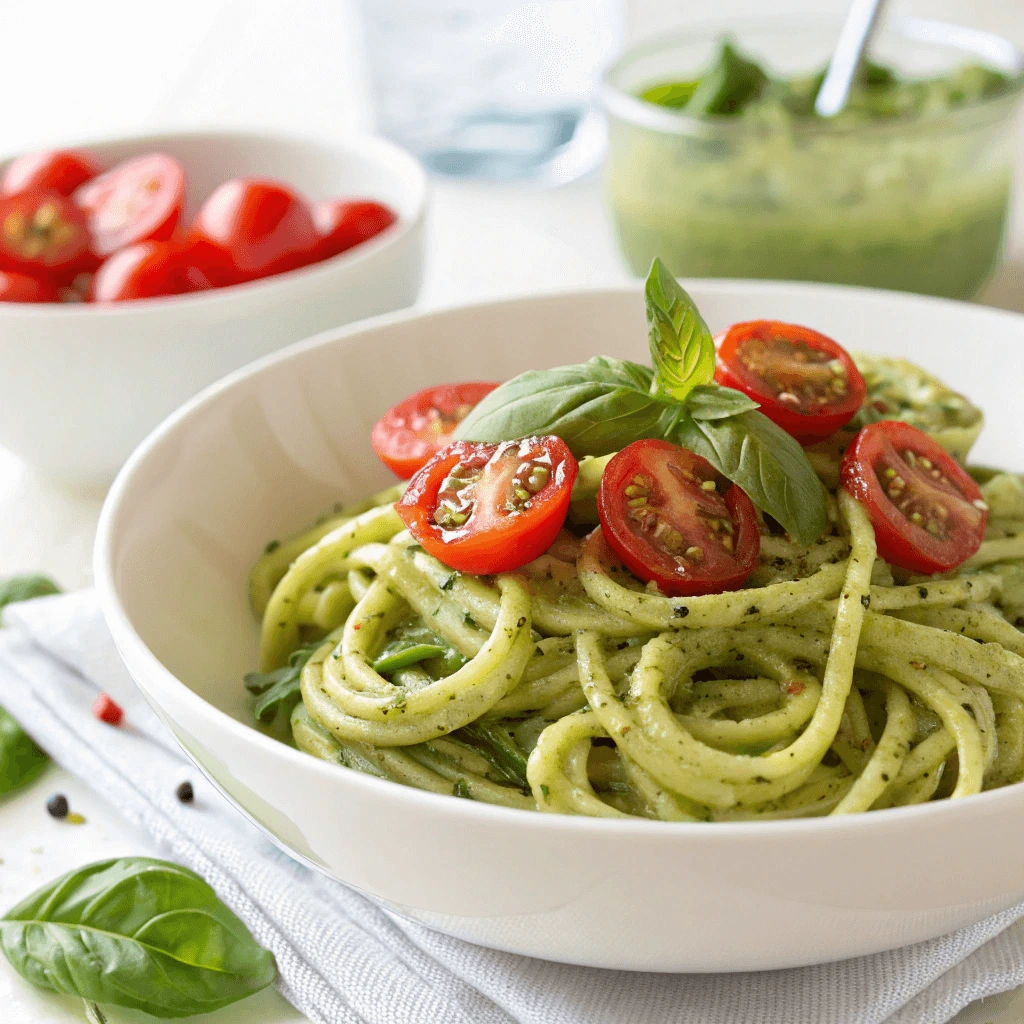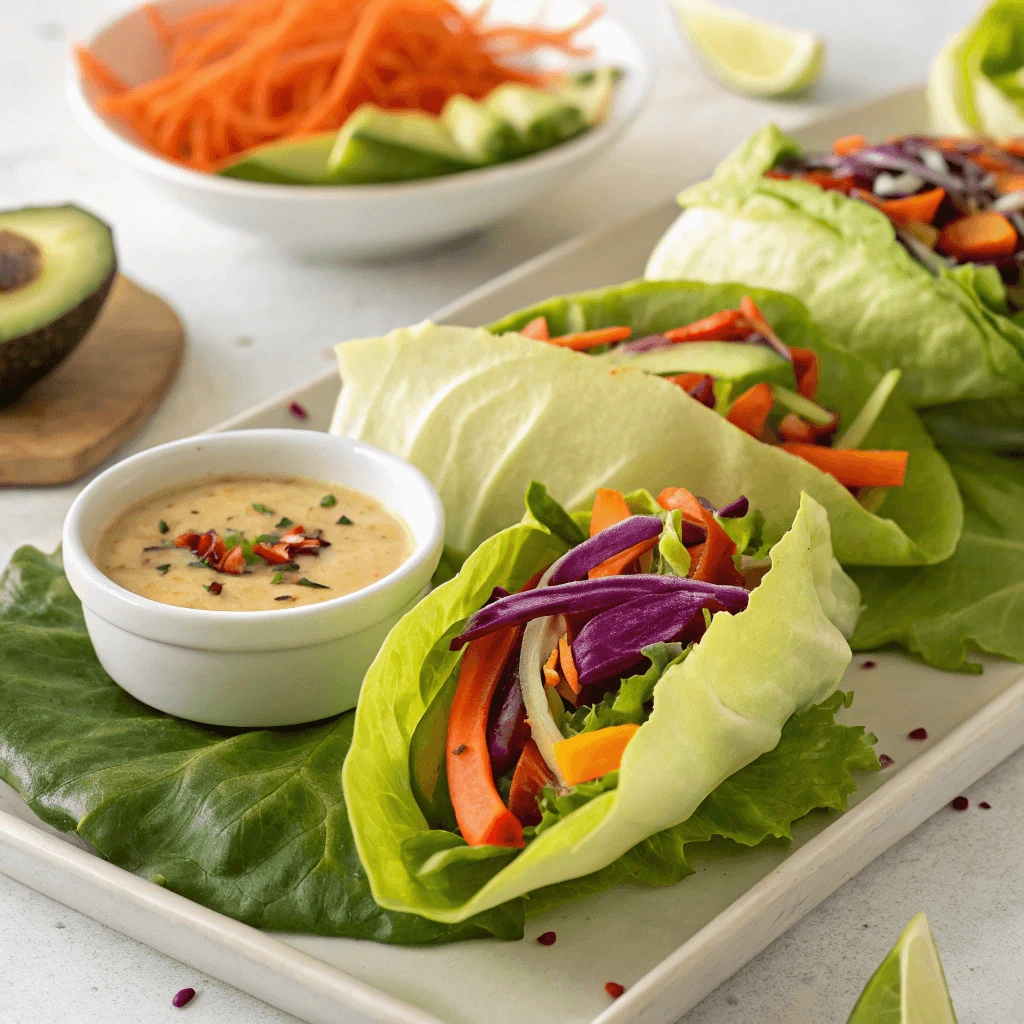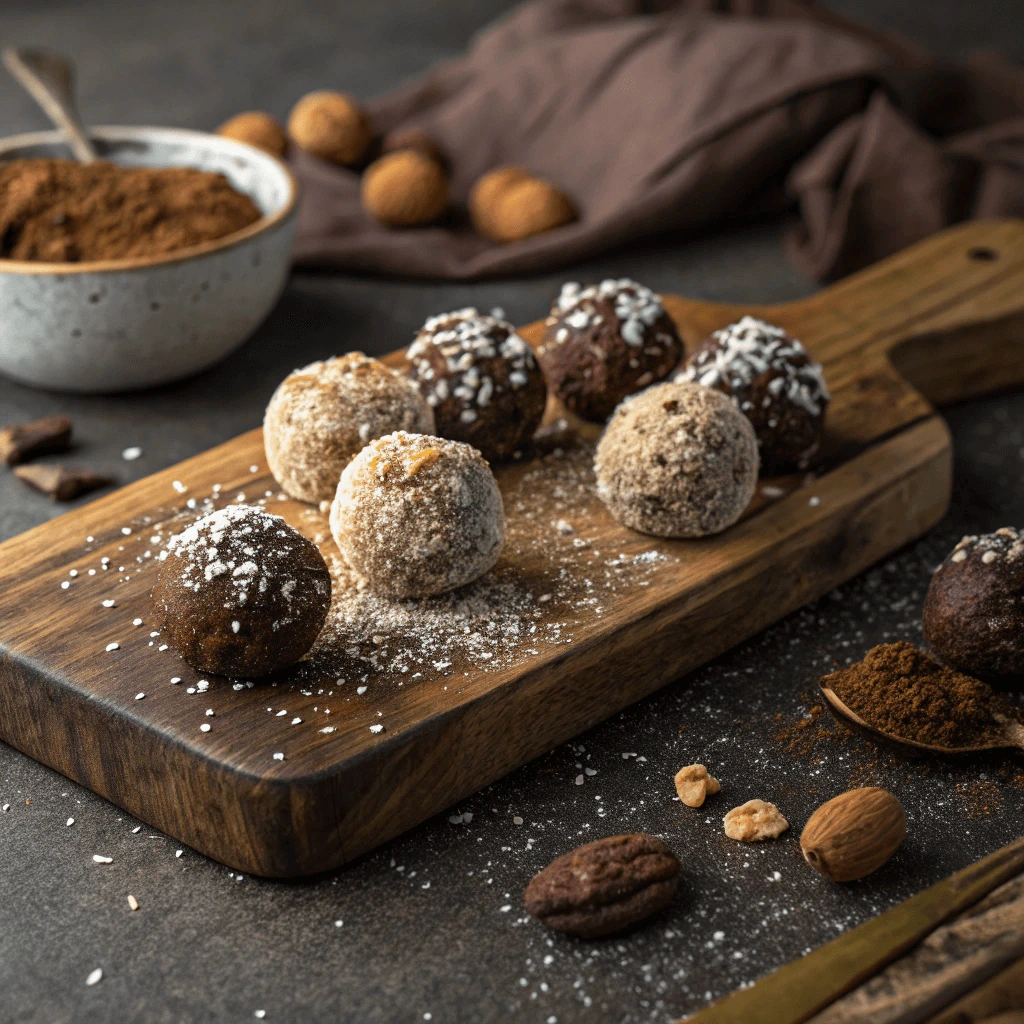Looking for fresh , flavorful meals that require no cooking? These 5 raw vegan recipes are perfect for anyone craving easy, healthy, and delicious plant-based options. Whether you’re new to raw eating or just short on time, each dish is packed with nutrients and ready in minutes. From creamy chia puddings to vibrant veggie wraps, these recipes use wholesome ingredients like nuts, seeds, and fresh produce. Get inspired to eat clean with meals that energize your body and please your taste buds—no oven or stove required!
Chia Pudding with Coconut Milk and Berries

Why Chia Seeds Are a Raw Vegan Superfood
Nutrient-Packed Powerhouses
Chia seeds deliver impressive nutrition in every spoonful. They contain omega-3 fatty acids, plant-based protein, and high levels of fiber—all essential for energy, digestion, and overall health. Just two tablespoons provide nearly 10 grams of fiber and 5 grams of protein, making them ideal for raw vegan diets.
Easy to Use in Raw Recipes
You don’t need to cook chia seeds to enjoy their benefits. Simply soak them in liquid like almond milk or coconut water, and they form a thick, gel-like consistency perfect for puddings, smoothies, or breakfast bowls. This makes them a go-to ingredient for quick, no-cook meals.
Boosts Energy and Keeps You Full
Thanks to their combination of healthy fats, fiber, and protein, chia seeds help regulate blood sugar and support sustained energy. They keep you feeling fuller for longer, reducing the need for frequent snacking.
Versatile and Mild in Flavor
Chia seeds absorb the flavors of whatever you mix them with. You can blend them into sweet or savory recipes, add them to dressings, or sprinkle them on top of salads. Their flexibility makes them an easy superfood to incorporate into any raw vegan meal.
Easy Steps to Make a Creamy Chia Pudding
Step 1: Gather Your Ingredients
To start, you’ll need just a few simple ingredients: chia seeds, a plant-based milk (like almond, coconut, or cashew), and your choice of natural sweetener such as maple syrup or agave. You can also add vanilla extract or a pinch of cinnamon for extra flavor.
Step 2: Mix and Stir Well
In a small bowl or jar, combine 3 tablespoons of chia seeds with 1 cup of plant milk. Add 1–2 teaspoons of sweetener and optional flavorings. Stir the mixture thoroughly to prevent the seeds from clumping.
Step 3: Let It Thicken
Cover the container and place it in the refrigerator. Let the mixture sit for at least 2 hours, or overnight for best results. Stir again after the first 10–15 minutes to ensure even consistency. The chia seeds will absorb the liquid and form a creamy, pudding-like texture.
Step 4: Customize and Serve
Once thickened, give it a final stir and add your favorite toppings—fresh berries, sliced bananas, shredded coconut, or crushed nuts. You can enjoy it as a snack, breakfast, or dessert.
This quick and easy recipe delivers a delicious, nutritious raw vegan treat in just minutes of prep.
Best Toppings: Berries, Nuts, and Natural Sweeteners
Add Fresh Berries for a Nutrient Boost
Fresh berries like blueberries, strawberries, raspberries, and blackberries make excellent chia pudding toppings. They’re rich in antioxidants, vitamin C, and fiber. These fruits also add natural sweetness and a juicy texture that complements the creamy pudding base.
Use Nuts and Seeds for Crunch and Protein
Top your chia pudding with a handful of raw nuts such as almonds, walnuts, or cashews. These provide healthy fats and protein, helping you stay full longer. You can also sprinkle on seeds like pumpkin, sunflower, or hemp for added minerals and a satisfying crunch.
Sweeten Naturally Without Refined Sugar
If you prefer your chia pudding a bit sweeter, skip refined sugar and reach for natural alternatives. Drizzle maple syrup, date syrup, or raw agave nectar over your pudding for a subtle, wholesome sweetness. Mashed bananas or blended Medjool dates also work well and add extra fiber.
Create Flavor Balance
Mix and match toppings to find your perfect flavor combo. Pair tart berries with creamy nuts, or offset a rich pudding with citrus zest. The right toppings enhance both taste and nutrition, making your raw vegan chia pudding a well-rounded, satisfying meal or snack.
Zucchini Noodles with Avocado Pesto

Using a Spiralizer for Quick Zoodle Prep
Why Zucchini Noodles Are a Raw Vegan Staple
Zucchini noodles, often called “zoodles,” are a fresh and satisfying alternative to traditional pasta. They’re light, hydrating, and low in carbs, making them ideal for raw vegan meals. Zoodles absorb sauces well and serve as a neutral base for flavorful toppings.
Choosing the Right Spiralizer
To make zoodles quickly and evenly, use a handheld spiralizer, countertop spiralizer, or julienne peeler. Handheld models are great for small portions, while countertop versions offer more precision and speed. Choose one that’s easy to clean and produces consistent strands.
How to Spiralize Zucchini Efficiently
Wash the zucchini thoroughly and trim off both ends. Place it securely into your spiralizer and rotate it to create long, curly noodles. Use even pressure to maintain uniform thickness. One medium zucchini typically yields one to two servings of zoodles.
Tips to Avoid Soggy Noodles
After spiralizing, pat the zoodles dry with a clean towel to remove excess moisture. Lightly salting them and letting them sit for 10 minutes draws out more water. Gently blot again before adding sauce or toppings. This keeps your dish crisp and prevents a watery texture.
Get Creative with Zoodle Dishes
Zoodles work well in raw salads, “pasta” bowls, or Thai-inspired meals. You can mix them with other spiralized vegetables like carrots or beets for color and crunch. With the right prep, zoodles make raw vegan meals fast, fun, and full of texture.
Making Creamy Avocado Pesto with Nutritional Yeast
Why Avocado Works Wonderfully in Raw Pesto
Avocados bring a naturally rich, buttery texture to raw sauces, making them an excellent substitute for oil or dairy. They blend effortlessly into a smooth pesto that feels indulgent while staying entirely plant-based. Avocados also deliver healthy monounsaturated fats, fiber, and potassium.
Key Ingredients for Flavor and Nutrition
Start by scooping the flesh of one ripe avocado into a blender or food processor. Add a handful of fresh basil leaves, a clove of garlic, and a generous squeeze of lemon juice for brightness. For seasoning, include sea salt and cracked black pepper to taste.
To enhance the cheesy flavor without dairy, add 2 tablespoons of nutritional yeast. This ingredient boosts the pesto with B vitamins and gives it a savory, umami-rich depth that mimics Parmesan.
Blend to Creamy Perfection
Pulse the mixture until smooth. If the consistency feels too thick, add a splash of cold water or raw almond milk to thin it out. Blend again until the pesto is velvety and spreadable. Taste and adjust lemon, salt, or garlic as needed.
Serving Suggestions
Toss the avocado pesto with zucchini noodles, use it as a dip for raw veggies, or spread it over flax crackers. The result is a bright, creamy, and satisfying sauce that brings raw vegan meals to life.
Serving Ideas and Flavor Variations
Create a Raw Vegan Pasta Bowl
Toss your zucchini noodles with the creamy avocado pesto and top with cherry tomatoes, sliced olives, and shredded carrots. This raw pasta bowl looks colorful and feels satisfying. Add a sprinkle of hemp seeds or sunflower seeds for texture and an extra dose of protein.
Turn It Into a Fresh Salad
Mix your zoodles with spiralized cucumber, bell pepper strips, and shredded cabbage. Pour the avocado pesto on top and toss gently. Garnish with microgreens or fresh herbs like parsley or cilantro. This version transforms your dish into a crunchy raw salad with bold Thai-inspired flavors.
Wrap It for On-the-Go Meals
Use large romaine lettuce leaves or collard greens as wraps. Fill each leaf with a generous serving of zoodles and a spoonful of avocado pesto. Add sliced avocado, sprouts, or grated beets for extra color and nutrients. Wrap tightly and enjoy a portable, raw vegan lunch option.
Explore Flavor Variations
Swap basil for cilantro or parsley to give the pesto a new twist. Blend in a small piece of jalapeño or a pinch of chili flakes for heat. Add lime juice instead of lemon for a tropical flavor profile. For a nuttier texture, include cashews or pine nuts in the pesto blend.
These serving ideas and variations allow you to enjoy this dish in multiple ways, keeping your raw vegan meals exciting and full of flavor.
Raw Veggie Lettuce Wraps with Almond Butter Sauce

Crunchy, Fresh Veggies to Use in Wraps
Choose a Colorful Variety
Vibrant vegetables not only add nutrition but also make your raw vegan wraps visually appealing. Start with a base of shredded carrots and purple cabbage. Carrots add a sweet crunch, while cabbage offers fiber and a bold color contrast. These two together create a crisp, refreshing texture in every bite.
Slice for Texture and Ease
Cut your vegetables into thin matchsticks or ribbons to ensure they roll easily inside your wraps. Use a julienne peeler or mandoline slicer for uniform slices. Bell peppers—especially red, yellow, and orange—add a juicy crunch and natural sweetness that pairs well with nut-based sauces.
Include Water-Rich Veggies for Hydration
Cucumber and zucchini both contain high water content and a clean, fresh taste. Slice them thinly and layer them in the center of the wrap to keep your filling light and hydrating. These veggies also balance richer elements like almond butter or cashew cheese.
Add Herbs and Leafy Greens
Fresh herbs like mint, cilantro, or basil elevate the flavor and aroma of your wraps. Include leafy greens such as spinach, arugula, or romaine for extra fiber and a nutritional boost. These ingredients also add structure and keep the wraps from becoming too soft.
Mix and Match for Endless Variety
Combine different textures, colors, and flavors to keep each wrap exciting. Use seasonal vegetables to rotate ingredients and ensure freshness. With so many options, raw vegan wraps can stay delicious, diverse, and never boring.
How to Make a Tangy Almond Butter Dipping Sauce
Gather Simple, Wholesome Ingredients
Start with creamy almond butter as your base. Choose natural almond butter without added sugars or oils for the healthiest option. You’ll also need fresh lemon juice for brightness, raw tamari or coconut aminos for salty depth, a touch of maple syrup or agave to balance flavors, and a small clove of garlic for a subtle kick.
Blend Ingredients to Create a Smooth Sauce
Combine all ingredients in a blender or food processor. Add about ¼ cup almond butter, 2 tablespoons lemon juice, 1 tablespoon tamari or coconut aminos, 1 teaspoon maple syrup, and minced garlic. Blend until the mixture becomes smooth and creamy. If the sauce feels too thick, add water or plant-based milk gradually, blending as you go, until you reach your preferred consistency.
Adjust Seasoning to Taste
Taste your sauce and adjust the flavor balance. Add more lemon juice if you want extra tanginess, or a bit more maple syrup if you prefer it sweeter. You can also increase tamari for saltiness or add a pinch of cayenne pepper for heat. Blend again after adjustments.
Serve and Store Properly
Pour the almond butter sauce into a serving bowl and use it as a dip or dressing for raw veggie wraps, salads, or grain bowls. Store any leftovers in an airtight container in the fridge for up to one week. Stir before serving, as natural separation may occur.
Wrap Assembly Tips for Quick Meal Prep
Choose the Right Wrap Base
Select sturdy, flexible leaves like large collard greens, romaine lettuce, or Swiss chard as your wrap base. These leaves hold fillings well without tearing and add extra nutrients to your meal. Wash and pat them dry to remove excess moisture, which helps prevent sogginess.
Prepare Fillings in Advance
For faster assembly, pre-chop your vegetables and herbs. Store shredded carrots, sliced bell peppers, cucumber strips, and fresh herbs in airtight containers or zip-lock bags in the fridge. Having your fillings ready to go saves time during meal prep and ensures fresh, crisp veggies every time.
Spread Sauces Evenly
Apply sauces or dips like almond butter sauce or avocado pesto evenly over the wrap base. This step adds flavor and helps bind the fillings together. Use a spoon or a small spatula to spread a thin, consistent layer—too much sauce can make wraps soggy.
Layer Fillings Strategically
Place heavier ingredients like avocado slices or quinoa near the center of the wrap to provide structure. Add lighter, crunchy veggies on top for texture. Avoid overfilling to make rolling easier and to prevent fillings from spilling out.
Roll Tightly and Secure
Fold in the sides of the wrap, then roll it tightly from the bottom up to encase all fillings. If needed, secure your wrap with a toothpick or wrap it in parchment paper for on-the-go convenience. A tight roll maintains shape and makes the wrap easier to eat.
No-Bake Energy Balls with Dates and Cacao
Choosing the Right Nuts and Seeds (Cashews, Walnuts)
Why Nuts and Seeds Matter in Raw Vegan Recipes
Nuts and seeds provide essential healthy fats, plant-based protein, and important minerals like magnesium, zinc, and iron. They add rich texture and flavor to raw vegan dishes, from creamy sauces to crunchy snacks. Choosing the right nuts and seeds can elevate the nutrition and taste of your meals.
Benefits of Cashews in Raw Recipes
Cashews have a naturally creamy texture when soaked and blended, making them perfect for raw vegan cheesecakes, dips, and sauces. They contain heart-healthy monounsaturated fats and supply magnesium and copper. Cashews also have a mild, slightly sweet flavor that blends well with other ingredients without overpowering them.
Why Walnuts Are a Great Choice
Walnuts add a robust, earthy flavor and crunch to raw energy balls, salads, and crusts. They are an excellent source of omega-3 fatty acids, which support brain and heart health. Their slightly bitter note contrasts nicely with sweet and savory elements, creating a balanced flavor profile.
How to Select Quality Nuts and Seeds
Always choose raw, unsalted, and unroasted nuts and seeds to keep your recipes truly raw and maximize nutritional benefits. Look for fresh, plump nuts without rancid odors. Store them in airtight containers in a cool, dark place to preserve freshness.
Tips for Soaking and Using Nuts
Soak nuts like cashews for a few hours or overnight before blending to soften them and improve digestibility. Walnuts also benefit from soaking to reduce bitterness and enhance texture. Proper preparation ensures your raw vegan dishes achieve the perfect creamy or crunchy consistency.
Blending in Raw Cacao for a Chocolate Boost
Why Raw Cacao Is a Must-Have Ingredient
Raw cacao powder adds rich chocolate flavor and powerful antioxidants to your raw vegan recipes. Unlike processed cocoa, raw cacao retains more nutrients because it undergoes minimal heat during processing. It provides magnesium, iron, and flavonoids that support heart health and boost mood naturally.
How to Choose Quality Raw Cacao Powder
Opt for organic, minimally processed raw cacao powder to ensure maximum health benefits and authentic flavor. Avoid powders with additives, fillers, or added sugars. Look for a deep, dark color and a slightly bitter aroma, which indicates a pure and potent product.
Incorporating Raw Cacao into Energy Balls
Add raw cacao powder directly to your nut and date mixture in the food processor. Blend the ingredients until they come together but maintain a slightly crumbly texture that holds when rolled. Start with 2 tablespoons of cacao per batch, then adjust to taste for the perfect chocolate intensity.
Enhancing Flavor and Texture
Pair raw cacao with natural sweeteners like dates or maple syrup to balance its bitterness. A pinch of sea salt can also enhance the chocolate flavor. For added creaminess, consider including a spoonful of almond butter or soaked cashews. These ingredients improve the texture and make your energy balls richer and more satisfying.
Tips for Storing and Serving
Store your raw cacao energy balls in an airtight container in the refrigerator to keep them fresh and firm. They make a convenient, healthy snack packed with natural chocolate flavor and essential nutrients. Serve chilled or at room temperature for the best taste.
Storing and Packing for On-the-Go Snacks
Proper Storage to Maintain Freshness
Store your raw vegan energy balls in an airtight container to keep them fresh longer. Refrigeration slows down any natural oils in the nuts from turning rancid, preserving their flavor and texture. If you plan to eat them within a week, the fridge is the best place. For longer storage, freeze the energy balls to maintain their freshness for up to three months.
Packaging Tips for Convenience
When packing snacks for on-the-go, wrap each energy ball individually in parchment paper or use small silicone baking cups. This prevents them from sticking together and makes portion control easier. Place the wrapped balls in a sturdy container or lunchbox to protect them from getting squished during travel.
Ideal Snack Packing Ideas
Pair your energy balls with fresh fruit, raw nuts, or vegetable sticks to create a balanced snack box. Include a small reusable ice pack if you plan to keep them chilled for several hours. This is especially helpful during warm weather or long outings.
Easy Snack Accessibility
Arrange the snacks so they’re easy to grab quickly when hunger strikes. Keeping your snacks visible and within reach encourages mindful eating and helps you avoid less healthy options.
Ready Whenever You Need Them
By prepping and storing your raw vegan energy balls properly, you ensure you always have a nutritious, delicious snack on hand. These grab-and-go treats keep your energy up and support a healthy lifestyle wherever you are.
Stuffed Bell Peppers with Herbed Quinoa (Soaked)
How to Soak Quinoa for Raw Recipes
Why Soak Quinoa?
Soaking quinoa activates its nutrients and makes it easier to digest. Raw quinoa contains natural compounds called saponins, which can taste bitter and irritate the digestive system. Soaking removes these saponins, reduces bitterness, and improves the texture for raw vegan dishes.
Step 1: Rinse Thoroughly
Before soaking, rinse the quinoa under cold running water. Use a fine mesh sieve to prevent grains from escaping. Rinsing removes surface dust and some of the natural saponins, preparing the quinoa for soaking.
Step 2: Soak in Clean Water
Place the rinsed quinoa in a large bowl and cover it with at least twice the amount of filtered or purified water. Let it soak at room temperature for 6 to 8 hours, or overnight for convenience. During this time, quinoa absorbs water and begins to sprout slightly.
Step 3: Drain and Rinse Again
After soaking, drain the water using a fine mesh sieve. Rinse the quinoa once more to wash away any remaining saponins or residue. This step ensures a fresh, clean taste.
Step 4: Use or Store
Use the soaked quinoa immediately in your raw vegan recipes like stuffed peppers or salads. If you want to store it, keep the drained quinoa in an airtight container in the fridge for up to 2 days. Rinse again before use to keep it fresh.
Fresh Herbs and Veggies to Mix In
Choose Vibrant, Crunchy Vegetables
Add colorful vegetables like diced cucumbers, cherry tomatoes, and shredded carrots to bring freshness and crunch to your raw vegan stuffed peppers. These veggies add natural sweetness and a satisfying texture that balances the softness of soaked quinoa. Thinly slice bell peppers or radishes for an extra pop of color and flavor.
Incorporate Leafy Greens for Nutrient Boost
Chopped fresh spinach, kale, or arugula enhance your quinoa mixture with vibrant greens and valuable nutrients like iron and vitamins A and C. Finely shred or chop the leaves to distribute their flavor evenly. These greens add a mild, slightly peppery taste and increase the fiber content, making your dish more filling.
Use Fresh, Fragrant Herbs
Mix in fresh herbs such as parsley, cilantro, basil, or mint to elevate the flavor profile. These herbs infuse your filling with brightness and complexity. Parsley adds a clean, grassy note, cilantro brings a citrusy zing, basil contributes sweet aromatic undertones, and mint offers refreshing coolness. Chop the herbs finely to release their full flavor.
Balance Flavors and Textures
Combine the crunchy vegetables, tender greens, and fragrant herbs evenly with the quinoa and seasoning. The mix of textures keeps each bite interesting, while the fresh herbs provide a burst of flavor. Adjust quantities to suit your taste and create a perfectly balanced, vibrant stuffing.
Creative Ways to Serve Raw Stuffed Peppers
Serve as a Colorful Appetizer
Raw stuffed peppers make a vibrant appetizer that impresses guests with their fresh flavors and beautiful presentation. Arrange them on a platter, garnish with fresh herbs like parsley or cilantro, and drizzle with a light lemon-tahini dressing. This presentation invites everyone to enjoy a healthy, flavorful start to any meal.
Pair with a Refreshing Side Salad
Balance the richness of the stuffed peppers by serving them alongside a crisp green salad. Use leafy greens, cucumbers, and radishes tossed in a simple vinaigrette. The contrasting textures and flavors create a refreshing meal that feels satisfying yet light. This pairing is perfect for warm weather or when you want a low-calorie meal.
Enjoy as a Light Main Course
For a fulfilling main dish, increase the portion size or serve with additional raw sides like zucchini noodles tossed in pesto or raw vegetable wraps. The nutrient-dense quinoa filling provides protein and fiber, while the fresh vegetables add vitamins and minerals. This combination supports sustained energy and fullness.
Turn Into Portable Snack Packs
Prepare smaller stuffed pepper halves as convenient grab-and-go snacks. Wrap each portion in parchment paper or place in reusable containers for easy transport. These snack packs suit busy days when you need a healthy, nutrient-packed option without cooking.
Elevate with Flavorful Toppings
Experiment with toppings like crushed nuts, seeds, or a sprinkle of nutritional yeast. These additions add texture, flavor depth, and extra nutrients. Fresh lemon juice or a dash of hot sauce can brighten and spice up the flavors, making every bite exciting.
Conclusion
These 5 raw vegan recipes prove that healthy eating doesn’t have to be complicated or time-consuming. Packed with fresh ingredients like nuts, seeds, and vibrant veggies, each recipe offers delicious flavors and nourishing benefits. Whether you’re new to raw veganism or simply looking for quick, wholesome meals, these dishes are perfect for any lifestyle. Easy to prepare and full of nutrients, they make clean eating enjoyable and accessible. Try them today and discover how simple, tasty raw vegan cooking can be!
